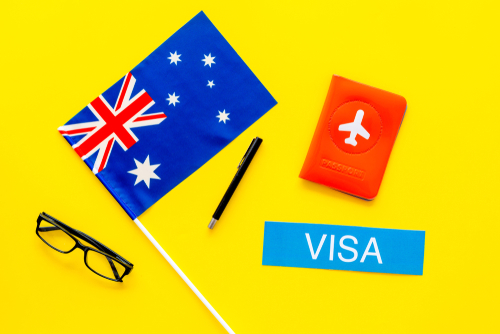Australia remains one of the top destinations for professionals worldwide who seek exceptional career opportunities paired with an enviable quality of life. Whether you’re dreaming of working in bustling cities like Sydney and Melbourne or contributing your skills to rural areas facing critical skill shortages, obtaining a work visa is your gateway. Navigating the visa process may seem daunting, but this guide breaks down everything you need to know to confidently apply for an Australian work visa in 2025.
What Is an Australian Work Visa?
An Australian work visa grants non-citizens temporary or permanent permission to work in Australia legally. With multiple visa types designed to meet varying employer and worker needs, understanding your options is the first step to success.
The Benefits of Working in Australia
From its strong economy to its cultural diversity, here’s why more professionals are choosing Australia:
- Thriving Job Market: Australia is known for its skill shortages in key sectors, creating plenty of opportunities for qualified professionals.
- Global Lifestyle Appeal: Beaches, world-class healthcare, and multicultural cities make Australia an ideal place for work and leisure.
- Pathway to Residency: Some work visas include pathways to permanent residency and eventually citizenship.
Work Visa Options for 2025
Australia offers a variety of visa programs for international workers. Here are some of the most common options based on different circumstances:
1. Skilled Independent Visa (Subclass 189)
This visa is for highly skilled candidates who aren’t sponsored by an Australian employer, family member, or state. Eligibility is based on a points system considering factors such as age, English proficiency, and relevant skills.
2. Employer-Sponsored Visa (Subclass 482 or 186)
With the Temporary Skill Shortage (Subclass 482) visa, Australian businesses can sponsor skilled workers to meet labor needs. The Employer Nomination Scheme (Subclass 186) allows for permanent residency after a period with an eligible employer.
3. Regional Sponsored Visa (Subclass 494 and 191)
Australia encourages workers to live and work in designated regional areas through the Subclass 494 visa. Long-term regional workers can transition to permanent residency.
4. Australian Working Holiday Visas (Subclass 417 or 462)
For younger workers (usually under 35), working holiday visas allow short-term work while experiencing Australia culturally.
A Step-by-Step Guide to Getting Your Australian Work Visa
Here’s everything you need to do from start to finish:
Step 1. Understand Visa Requirements
Different visas have varying requirements, covering:
- Skills assessed by Australian authorities
- English language tests (such as IELTS or PTE)
- Health checks and insurance
- The ability to prove sufficient funds in some cases
Step 2. Submit an Expression of Interest (EOI)
For most skilled visas, you’ll need to submit an EOI through SkillSelect, an online tool that determines eligibility based on skills, occupation, and points.
Step 3. Verify Employer Sponsorship If Applicable
If your visa requires employer sponsorship, make sure your employer has completed the necessary nomination application with the Australian Department of Home Affairs.
Step 4. Gather Necessary Documentation
Ensure you have the following:
- Academic transcripts and professional certifications
- English proficiency test results
- A valid passport
- Evidence of employment history and expertise
Step 5. Lodge Your Application Online
Apply through ImmiAccount, the official system for submitting Australian visa applications. Include all relevant documents and ensure accuracy.
Step 6. Pay the Application Fee
Application fees vary by visa type. For example, the Subclass 189 visa fee starts at AUD 4,640 for the primary applicant.
Step 7. Attend Biometrics and Health Checks
You’ll be notified if health assessments are required. Completing biometrics is also often mandatory.
Step 8. Wait for a Decision
Visa decisions typically take a few weeks to several months. Check estimated processing timelines during your application.
- Stay Updated on Immigration Policies
Australia’s immigration rules can change annually. Stay updated at the Australian Department of Home Affairs portal.
- Seek Professional Help When Needed
If you’re unsure about eligibility or requirements, consider consulting with registered migration agents or immigration attorneys.
- Leverage Regional Opportunities
Regional visas often have fewer restrictions and quicker processing times if you’re willing to work outside Australia’s major cities.
FAQs About the Australian Work Visa Process
What English tests are accepted for Australian work visas?
Australia accepts tests such as IELTS, TOEFL iBT, PTE Academic, and Cambridge Advanced English. Each visa stream will specify the minimum required scores.
Can I include my family in my work visa application?
Yes! Most work visas allow you to include dependent family members (e.g., partners and children).
How long does it take to process an Australian work visa?
Processing times range from several weeks to months and depend on the visa type, application complexity, and demand.
Is there a minimum points requirement for skilled visas?
Yes, skilled visas like Subclass 189 require a minimum of 65 points, determined by factors such as age, educational qualifications, and language ability.
Why 2025 is the Perfect Year to Work in Australia
Australia’s growing economy, commitment to innovation, and increasing demand for global talent make 2025 ideal for advancing your career. Whether you’re just starting your professional life or looking for a change of pace, this guide has everything you need to get started.
